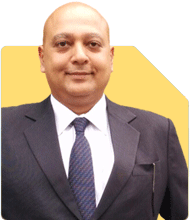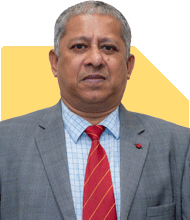My son is of 23 years old having bank balance of 13 lakh which he generated from you tube
What will be best investment for him for future
Ans: Firstly, congratulations to your son for building a bank balance of ?13 lakhs from his YouTube channel at such a young age. This achievement shows his dedication, creativity, and hard work. Now, it's essential to invest this money wisely to secure his financial future. Let's explore the best investment strategies for him.
Understanding His Financial Goals
At 23 years old, your son likely has different financial goals compared to someone older. His goals might include:
Building an emergency fund
Saving for higher education or career development
Long-term wealth accumulation
Future big purchases like a car or travel
Planning for retirement
Understanding these goals will help in creating a tailored investment strategy.
Building an Emergency Fund
An emergency fund is crucial for financial security. It provides a safety net for unexpected expenses or income disruptions. Your son should set aside at least 6 months' worth of living expenses in a safe, easily accessible account, like a high-interest savings account or liquid mutual fund.
Investing in Mutual Funds
Benefits of Actively Managed Funds
Actively managed mutual funds are managed by professional fund managers who aim to outperform the market. They research and select securities to achieve better returns. While they have higher fees than index funds, the potential for superior performance can justify the cost.
Diversification Through Hybrid Funds
Hybrid funds offer a mix of equity and debt investments. They provide the growth potential of equities and the stability of debt instruments. This balance can be ideal for a young investor looking to grow wealth with moderate risk.
Equity Mutual Funds for Growth
Equity mutual funds invest in stocks and are suitable for long-term growth. Given your son's young age, he can afford to take higher risks for potentially higher returns. Large-cap funds, multi-cap funds, and sectoral funds can be considered for a diversified equity exposure.
Disadvantages of Index Funds
Index funds merely replicate a market index and don't aim to outperform it. They can be too passive for a young, ambitious investor seeking high returns. Actively managed funds, on the other hand, adapt to market conditions and seek opportunities for higher gains.
Avoiding Direct Funds
Direct funds have lower expense ratios but require self-management. Without professional guidance, your son might miss critical market insights and strategic adjustments. Investing through a Certified Financial Planner (CFP) ensures professional management, regular reviews, and strategic planning.
Considering Systematic Investment Plans (SIPs)
SIPs allow investing a fixed amount regularly in mutual funds. This approach can be beneficial as it:
Promotes disciplined investing
Reduces the impact of market volatility
Helps in rupee cost averaging
Starting SIPs in a mix of equity and hybrid funds can be an effective way for your son to grow his wealth steadily.
Long-Term Wealth Accumulation
Compounding Benefits
Investing early leverages the power of compounding. The longer the investment period, the greater the compounding effect. Starting now, your son's investments can grow significantly by the time he reaches major financial milestones.
Diversifying Investments
Diversification reduces risk by spreading investments across various asset classes. Besides mutual funds, consider a small allocation in gold funds or international funds for further diversification. These can hedge against market volatility and currency risks.
Education and Career Development Fund
Your son might consider pursuing higher education or professional certifications to advance his career. Setting aside a portion of his investments in a dedicated education fund can ensure he has the resources when needed.
Future Big Purchases
If your son plans big purchases like a car or travel, short-term debt funds or fixed deposits can be suitable. They offer safety and liquidity while providing better returns than a regular savings account.
Retirement Planning
It might seem early, but starting retirement planning now can yield tremendous benefits. Investing in equity mutual funds through SIPs can build a substantial corpus over time. This early start will ensure financial independence in his later years.
Conclusion
Your son's financial journey has started strong with his earnings from YouTube. By investing wisely in mutual funds, building an emergency fund, and diversifying his portfolio, he can secure a prosperous future. Regular investments through SIPs, professional guidance from a CFP, and a focus on long-term goals will help him achieve financial success.
Best Regards,
K. Ramalingam, MBA, CFP,
Chief Financial Planner,
www.holisticinvestment.in














.jpg)








